Text and Photos by Henrylito D. Tacio
“Agusan Marsh is one of the most ecologically significant wetlands in the Philippines. Found in the heart of Mindanao’s Agusan Basin, this vast expanse of marsh covers an area roughly the size of Metro Manila. It contains nearly 15 percent of the nation’s fresh water resources in the form of swamp forests.”
That’s how the website of the Society for the Conservation of the Philippine Wetlands (SCPW) describes Agusan Marsh, which covers an area of 14,835.989 hectares. It was declared as a protected area by former President Fidel V. Ramos and was listed as a wetland of international importance under the Ramsar Convention (site no. 1009, effective November 12, 1999).
The area — which covers eight Agusan del Sur municipalities, namely: Talacogon, San Francisco, Rosario, Bunawan, Sta. Josefa, Veruela, Loreto, and La Paz — harbors unique and pristine habitats like the sago and “peat swamp forest.” In the very heart of the marsh is a semi-permanent lake where many square kilometers of lily pads, hyacinths, and other aquatic plants spread out like an enormous green quilt.
More importantly, Agusan Marsh harbors the most diverse assemblage of reptiles and amphibians and supports the largest remaining population of the estuarine crocodile (Crocodylus porosus) and the endangered Philippine crocodile (Crocodylus mindorensis).
The United Nations Education, Scientific, and Cultural Organization (UNESCO) have declared some 42,000 hectares of the marshlands as a “world heritage center” due to “its floral and faunal diversity with seven habitat types.”
I had been to the place twice. The first time was in 2010. The perilous boat trip — as crocodiles abound in the area — following the chocolate-laden Cebulao River to Agusan Marsh took us about one hour and forty-five minutes. The voyage was boring, but I tried to marvel myself at the floating houses built along the riverbanks and alluvial junctions. It was also on this trip that I got a closer glimpse of the first hoard of exotic and migratory birds gracefully flapping their wings as they transferred from one tree to another in search of their food.
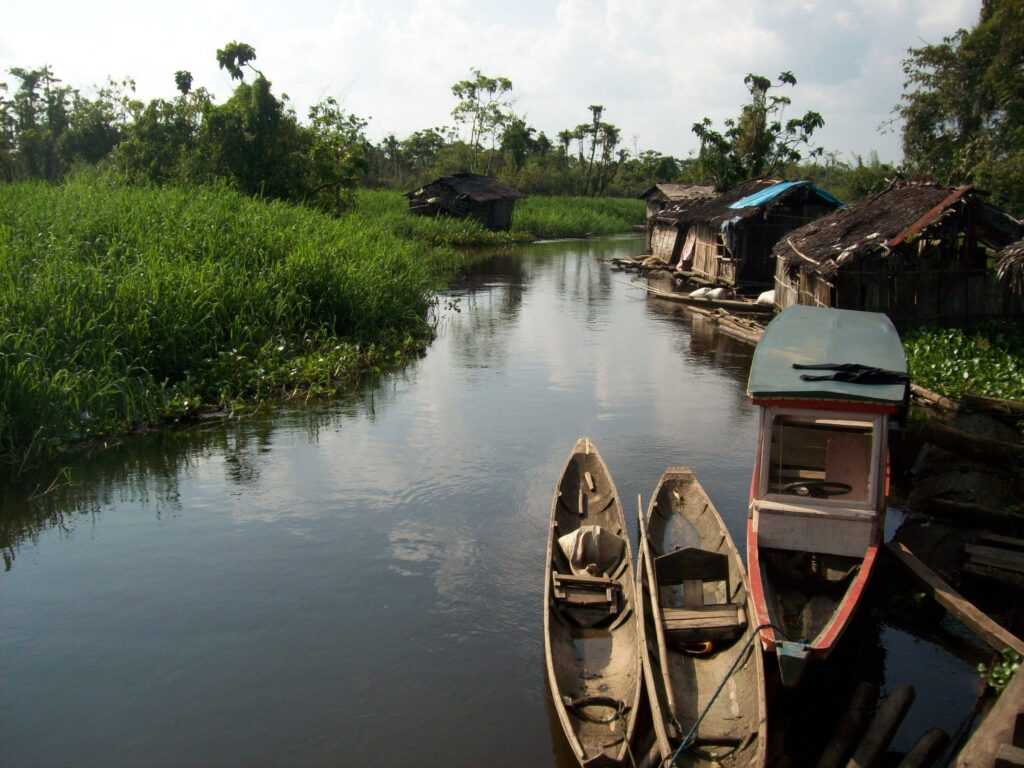
The most recent visit was when I joined a group of journalists who was tapped to cover the event of turning over ten brand new computers donated by the Aboitiz Foundation to Sabang Gibong Elementary School.
Instead of following the Cebulao River, this time, we trailed the river that flows in Talacogon. If I remember it right, it was the same town that Harold Ray Watson, the 1985 Ramon Magsaysay awardee for peace and international understanding, used to visit when he was still working in the country.
“Sabang” means “juncture” or “crossroad,” and we were to visit the place where a tributary river called Gibong joins the main Agusan River. Our invitation said that the travel time from Talacogon to barangay Sabang Gibong was two hours. But one of the teachers who accompanied us told me that it’s actually three hours to reach the place.
It was an exhausting trip. There were 14 of us in the boat. There were no seats available, so we had to sit at the sides of the boat. We didn’t have the luxury of stretching ourselves since there was not enough space. You can’t even stand or answer the call of nature.
To make ourselves survive the ordeal, we had to divert our attention to the beauty that surrounded us during the trip. We took photos of floating houses which caught our fancy. One interesting thing we found out is that people have comfort rooms a few meters away from the houses. “I am sure the excreta go to the river,” someone commented. We laughed.
As stated earlier, the houses are built on top of a raft. We saw some women washing clothes while there were others who took a bath. We really don’t know how deep the river is because no one knows.
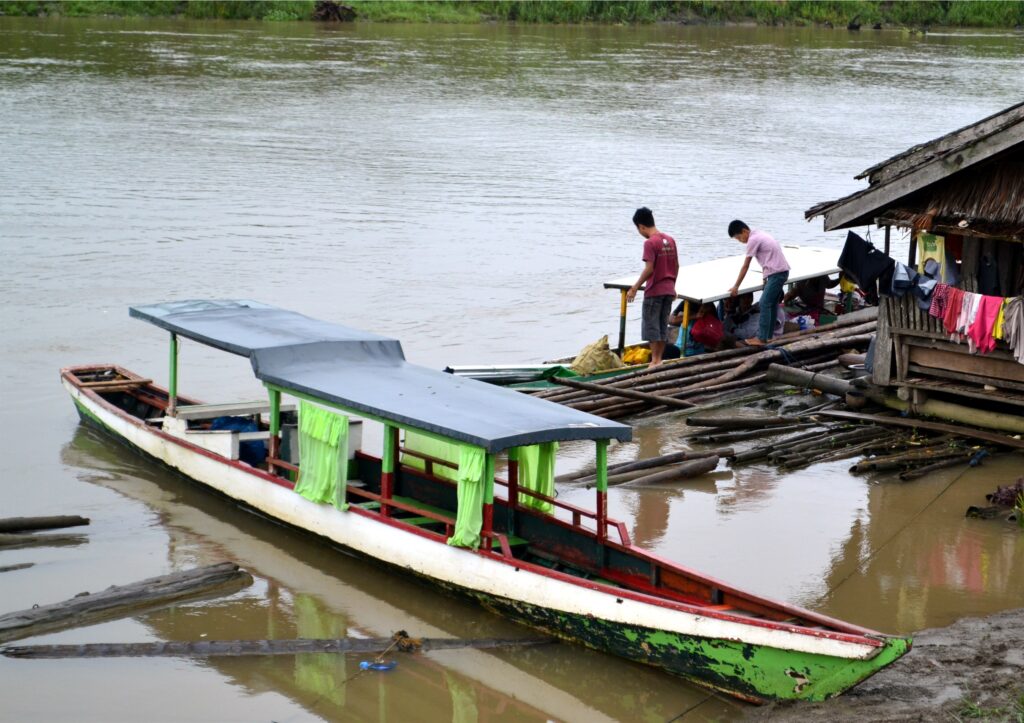
Boat ride 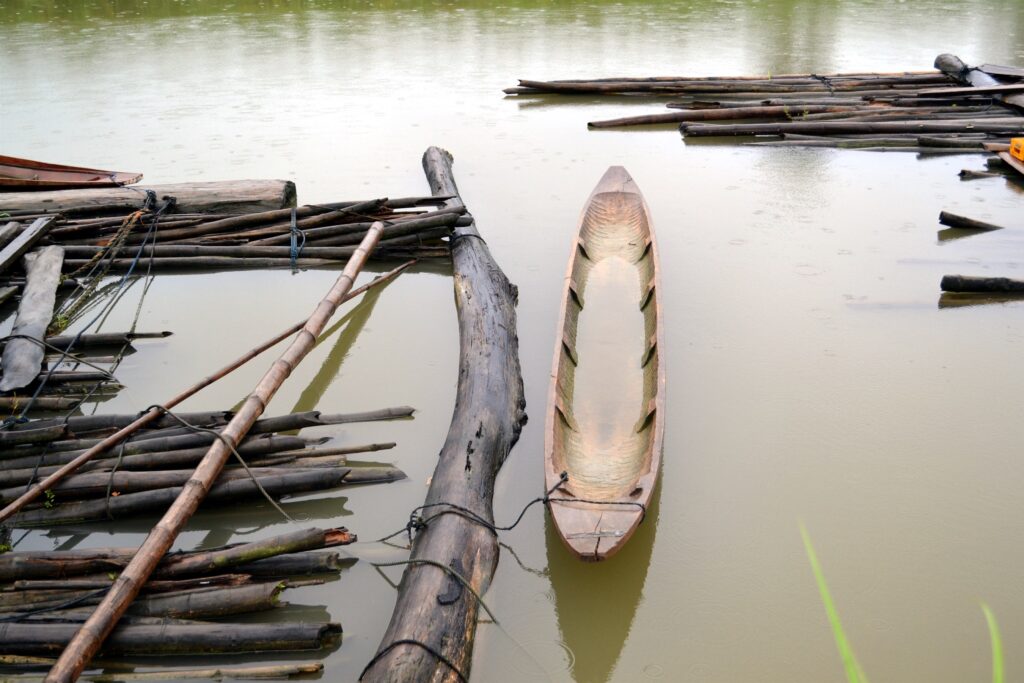
Small banca
Other things that caught our attention: water hyacinth, man bathing his carabao, crops (corn and cassava) growing near the riverbank, gully erosion, some floating logs, and boats that were carrying some passengers.
Exactly three hours after we left Talacogon, we arrived at barangay Sabang Gibong. What was welcomed was a totally different world. We were surprised that there is a community, mostly ethnic Manobos, thriving in the area. These people have made their permanent homes deep within the marsh, living on floating homes.
The small houses, which are linked to each other with a few ropes, are made of bamboo and nipa lashed to hardwood logs. These freely rise or fall with the level of the marsh itself. Here, extreme weather is the norm.
“For four months — from September to December — this barangay is under water,” said Emely D. Sumipao, the teacher-in-charge of Sabang Gibong Elementary School. “But despite this, classes continue.”
A father or mother usually brings their children to the school via a small banca (outrigger). In some instances, children themselves paddle the banca in going to school. That’s what 9-year-old Carlo Curato is doing. The fourth-grade pupil brings with him his sister, who is still in kinder.
According to Sumipao, there are only three teachers and one volunteer doing the task of educating almost 100 pupils in a limited space. One teacher teaches two grades in each classroom. Despite the lack of school supplies and a classroom shared between different ages, students were eager to learn.
The teachers consider the hardships they are facing as challenges. But the biggest problem they encounter is coming to the place. “It’s about 40 kilometers away from the town proper,” said Sumipao. “The boat fare is about P100.”
Sumipao is not a resident of the place. She comes to the place on Sunday afternoon and leaves every Friday afternoon. “At first, it was hard,” she said. “But I learned to love the place, especially the children who are willing to learn.”
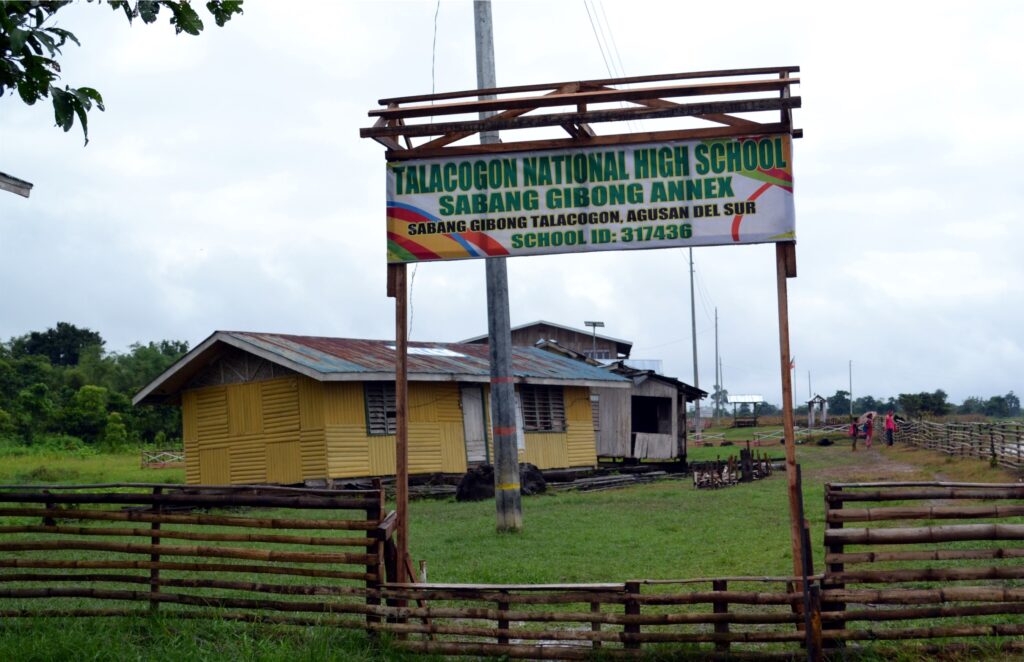
For several years, residents living in floating houses in this barangay have been groping in the dark every night.
Thanks to the Barangay Line Enhancement Program (BLEP) and Sitio Electrification Program (SEP) implemented by Agusan del Sur Electric Cooperative, Inc., the marshland barangay finally has electricity.
“We are very happy that finally we have electricity which we had been wanting through the years,” said Felipa S. Goloran, the barangay captain.
As part of the corporate social responsibility of Aboitiz Power Corporation, it donated ten units of brand new computers. “We want the pupils of this barangay to be at par with those growing up in the town proper,” says Roy M. Renconada, Aboitiz’s senior account officer.
Meanwhile, the unique ecosystem of Agusan Marsh is being threatened by a wide range of issues and problems to wit: pollution from mining upstream, wildlife and timber poaching, and unregulated in-migration.
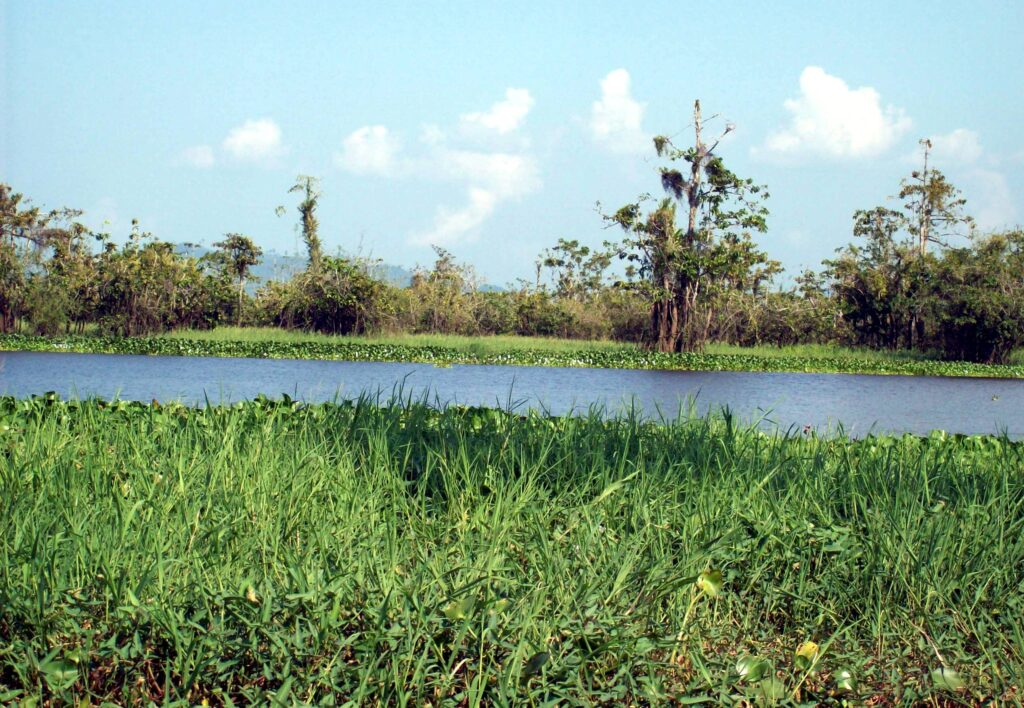
“Exotic and invasive species have been introduced (intentionally and unintentionally),” deplored SCPW. “Erosion and siltation due to mining operations and deforestation occurring largely upstream adversely affect organisms in the marsh and even the coastal areas downstream of Agusan River. In-migration has also increased adding more pressure to the marsh ecosystem. Poor management of solid wastes, lack of proper sanitation facilities, and lack of potable water supply are also critical concerns as they add to the pressure on the marsh.”

